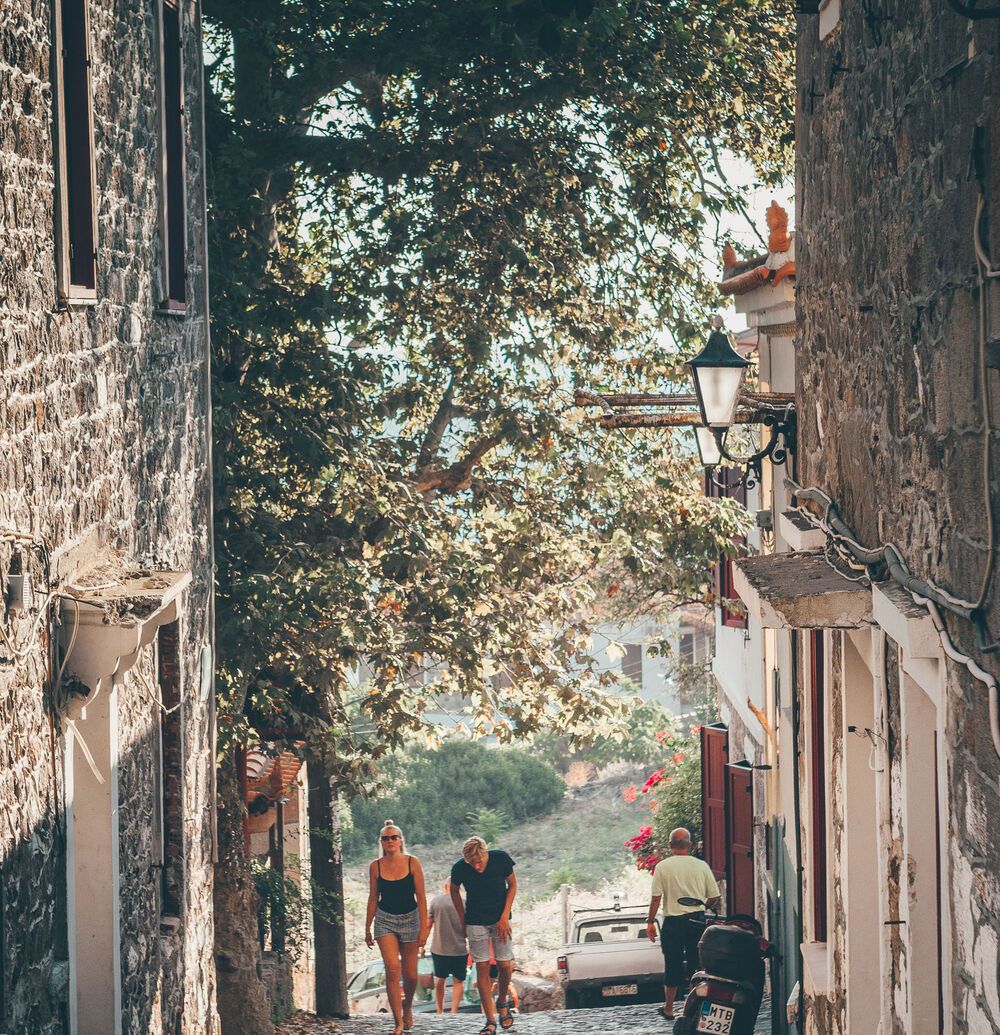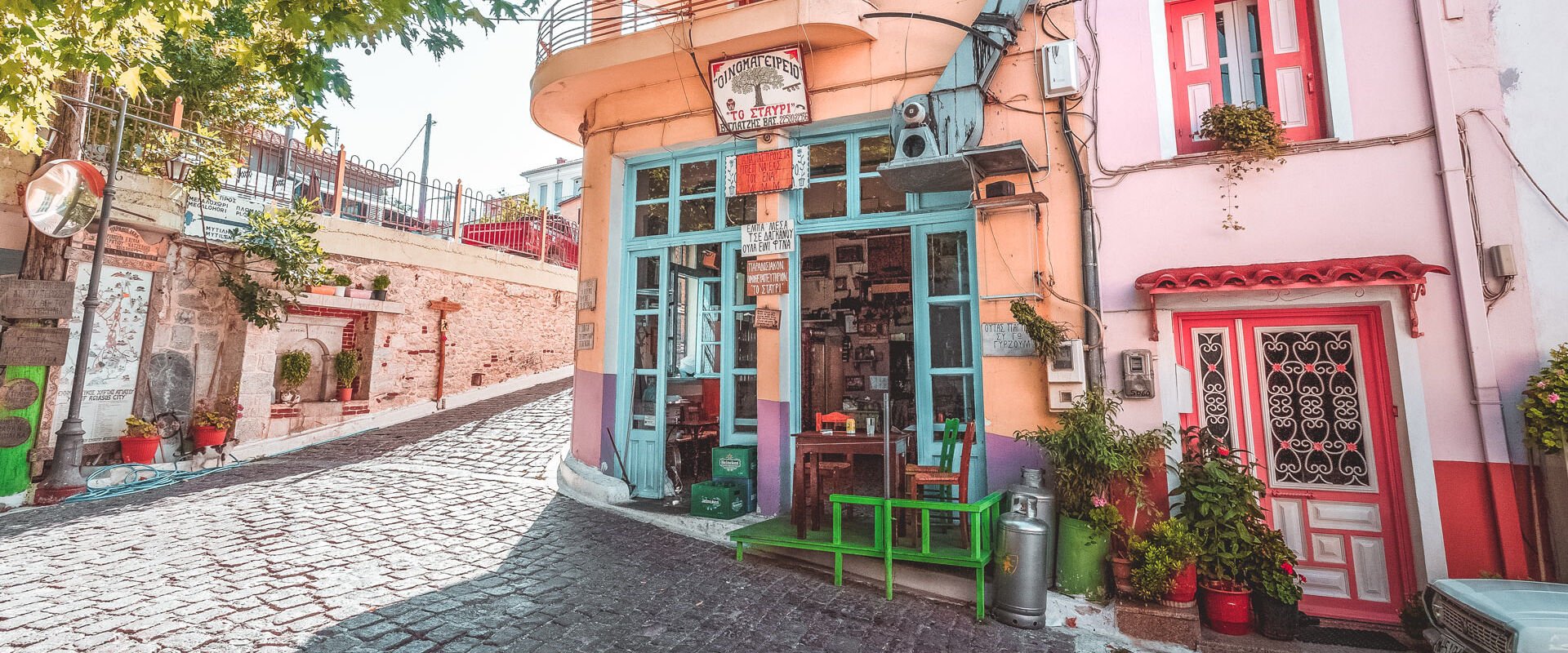The fragrances, flavours and ever-changing scenery of Lesvos provide the backdrop to unforgettable holidays in the North Aegean.
Welcome to the home of ouzo! Whether your chosen welcome is a glass of the island’s iconic spirit or a delicious coffee in town, prepare for an unforgettable holiday. We’ve singled out ten of the best experiences on Lesvos. It’s up to you how many you select. You’ll love them all!
The town of Mytilene
The history of Lesvos’ main town begins in the 10th century BC. Once you’re here, the standout images are the ‘Statue of Liberty’, Church of Agios Therapontas (with its magnificent dome), Metropolitan Church of Agios Athanasios, Ottoman monuments (such as the Geni Tzami mosque and the adjacent Tsarsi), and the impressive castle built under the rule of the emperor Justinian. Enjoy strolls in Prokymaia, with its impressive neoclassical buildings, the restaurants and cafes, the cobblestone streets of town and Ermou Street with its modern shops, ouzeries and tavernas. In the neighbouring area of Vareia, you’ll find the famous museum of the Greek folk painter Theofilos as well as the Museum of Modern Art with works by Matisse, Miro, Picasso, and Tsarouhi.
A walking tour of Mytilene in Lesvos
Molyvos, the one and only
The special atmosphere in Lesvos’ second town is made by the homes of stone and wood, little shops of all kinds, cafes and ouzeries, and lots and lots of cobblestone streets. And of course the Byzantine castle, one of the best-preserved in all of the Eastern Mediterranean. Walk along the main street of the village, admire the central market and head up to the castle where the views are spectacular. In Molyvos Park, an old olive oil factory has been converted into one of the most interesting hotels on the island. It’s worth visiting the picturesque fishing port of Molyvos, with its caiques and trawlers, where the commercial activities of the islanders never stop. There is a choice of ouzeries where you can enjoy a meze paired with ouzo.
The Petrified Forest
Among the most beautiful and oldest geological heritage monuments worldwide, this UNESCO-protected natural monument has an area of 150,000 sq m, with hundreds of standing and fallen petrified tree trunks and volcanic rocks. There is no need to walk it all: the Natural History Museum in Sigri (part of the worldwide UNESCO Geopark Network) will satisfy your curiosity.
Authentic villages
The villages of Lesvos are an open and hospitable embrace for all. It is worth visiting the following:
- Plomari: The homeland of ouzo, with a central market buzzing with life and old coffee shops serving traditional Greek coffee.
- Agiasos: A preserved traditional village on the slopes of Mount Olympus. In its cobblestone streets, you’ll find shops selling wooden sculptures and fabrics. Visit the Church of Panagia with its miraculous icon that dates to the 4th century.
- Petra: One of the most impressive villages in Lesvos, with an incredible view from the Church of Panagia.
- Skala Sykamias: The old stately houses will impress you, as will the chapel of Panagia Gorgona.
- Asomatos: Keep an eye out for the wooden sculptures and homemade jams and sweets.
- Mantamados: Famous for its fresh dairy products and ceramics. Visit the potters in their workshops and discover how they create their works with the wheel. In the same area, outside of the famous Taxiarchis Monastery, you’ll find a picturesque coffee shop serving delicious loukoumades (traditional doughnuts) and other local products in the shade of the plane trees.
- Agia Paraskevi: Famous for its ‘Bull Festival’, organised during the last weekend in June.
- Sigri: The revival of the custom of Ai Yianni Klidona occurs on the July 24, followed by a folk festival where fires are lit and the locals jump through the streets of the village.
Unforgettable beaches
Prepare yourselves for 259km of coastline, Blue Flag-awarded beaches and crystalline waters, deep enough for scuba diving.
- In Molyvos, you’ll find organised beaches with beach bars, and you’ll feast on fresh fish at the nearby tavernas.
- In Eftalou, you’ll enjoy the thermal springs as well as the clear water of its famous beach.
- In Tarti, at the Gulf of Gera, eat fresh seafood at the little tavernas.
- In Skala Kalloni, with its beautiful beach, you’ll drink ouzo and try the famous sardines of the same name.
- On the western side of the island, at Sigri, you’ll swim under the castle, while surfers will opt for the nearby beach of Faneromeni.
- Young groups of friends gather at the organised beaches of Skala Eressos, Kanoni and Agios Ermogenis near the capital.
- For family-friendly holidays make your way to Petra, Vatera beach with all the facilities needed for water sports, Anaxos with its tavernas and view of Molyvos Castle, as well as the organised beach of Tsamakia, near Mytilene.
- For those that prefer seclusion, choose the beaches of Tsonia, Chrousso, Chryssi Akti and Antissa.
12 of the best beaches in Lesvos
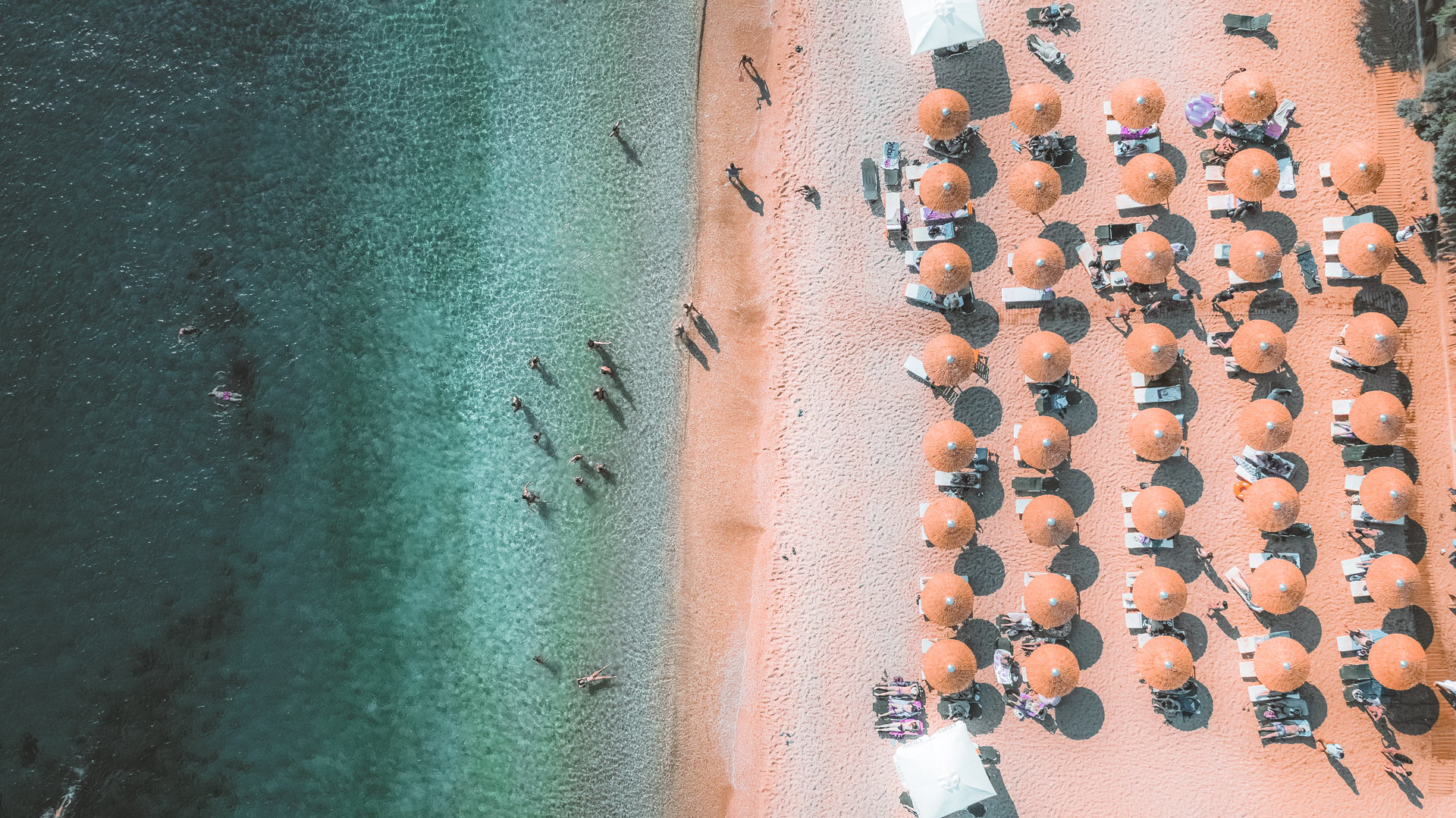
Ouzo brings happiness to the heart
The history of ouzo begins with the Greeks of Alexandria and Smyrna – experts in the techniques of distillation from the 15th century. Centuries later, the so-called rakitzides produced a spirit with anise and fragrant herbs, which charmed the affluent class of the Ottoman Empire. After the Asia Minor catastrophe, the rakitzides migrated to Greece and ouzo found in Lesvos the perfect homeland, due to its vineyards and exceptional quality of anise. Enjoy it straight or with water, and pair it with meze of all kinds, including fresh fish, the famous olives and oil of Mytilene, and the delicious ladotyri, a sheep’s milk cheese.
Sampling the ouzo tradition of Plomari
For a unique experience, try ouzo paired with the famous sardines of Kalloni. Take note of some of the other local specialities: giouslemedes (small cheese pies with mint), zucchini blossoms stuffed with cheese and lakerda (cured bonito).
Thermal springs and waterfalls
Some 14 waterfalls can be found around the island and at the thermal springs of Thermis, Lisvorios, Gulf of Gera, Eftalou, and Polihnitou. In the area of Eressos, in a large olive grove, there is a meditation centre that provides the treatments of the famous Indian mystic and philosopher, Osho.
Archaeological sites
The Ancient Theatre of Mytilene, in the area of Kamares, was built in the early Hellenistic years and had a capacity of 10,000 spectators. The Ionic temple of Messa, near Agia Paraskevi, is one of the most significant monuments and attractions of Lesvos, together with the Ancient Temple of Klopedi, near Agia Paraskevi, and the Roman Aqueduct at Moria, just outside the capital.
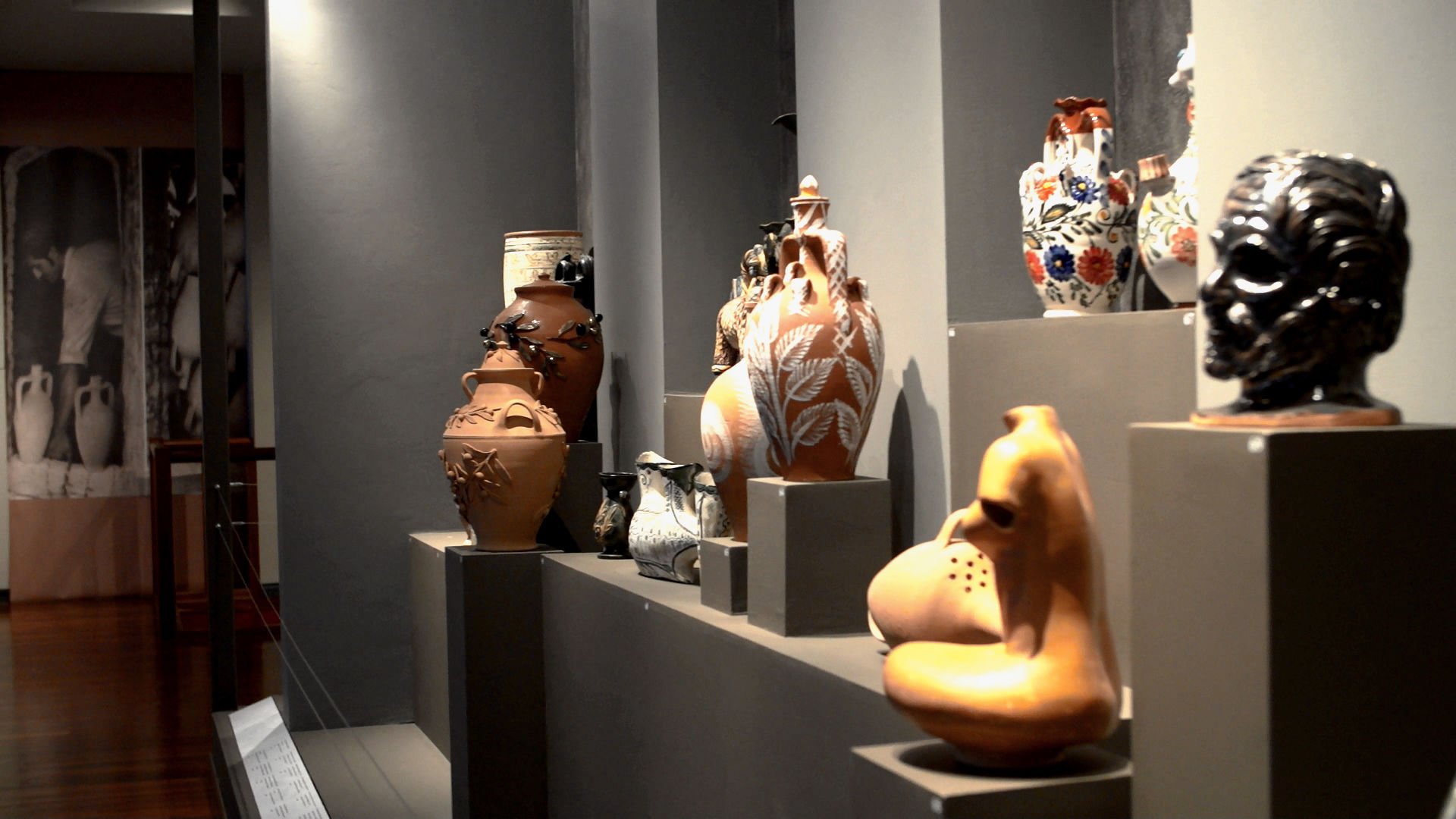
The monasteries
Traditions, heirlooms and priceless treasures of the Orthodox religion: The miraculous ‘bas-relief’ icon of the Archangel Michael in Mantamado was, they say, made of clay and blood while on the south side of the ‘Iero Vima’, at the Monastery of Limonas, there is a water fountain from which holy water flows. The Monastery of St John the Theologian looks like a fortress and, because of its position on the summit of Mount Ordymnos, is called ‘Ypsilos’ (High). And don’t forget to visit the Monastery of Pammegiston Taxiarchon, built in the 16th century.
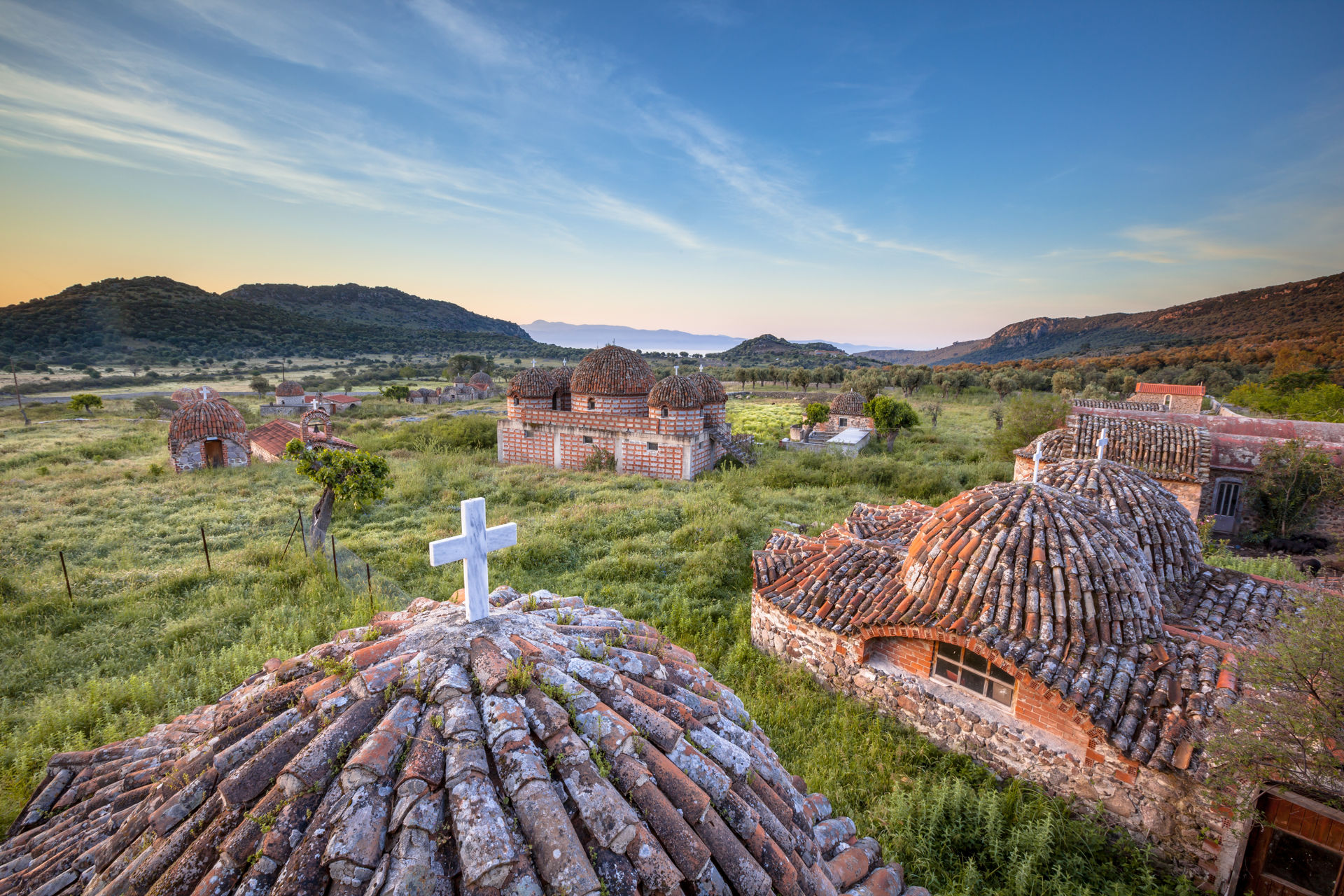
Birdwatching
Lesvos’ position in the Eastern Mediterranean and its variety of wetlands provides it with impressive endemic birdlife as well as visits from migratory birds from Asia, Africa and elsewhere in Europe – at least 134 different kinds in total! Discover the wetlands in Agia Paraskevi, Dipios – Larsos and Kalloni, nesting places for rare and endangered birds. Nature lovers and scientists observe black and white storks, Ruddy, Avocets, jackdaws, shags and pink flamingos. The islets of Glaronisi and Myrmingi are a protected wild bird area and at Agios Georgios there is an ecological observatory.
